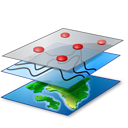On this day in 1776, the Declaration of Independence was approved by the Continental Congress, setting the 13 colonies on the road to freedom as a sovereign nation. As always, this most American of holidays will be marked by parades, fireworks and backyard barbecues across the country.

2.5 million
In July 1776, the estimated number of people living in the newly independent nation.
Source: Historical Statistics of the United States: Colonial Times to 1970
316.2 million
The nation’s estimated population on this July Fourth.
Source: U.S. and World Population Clock
The Signers
56
Numbers of signers to the Declaration of Independence.
Benjamin Franklin, John Adams, Thomas Jefferson, Roger Sherman and Robert R. Livingston comprised the Committee of Five that drafted the Declaration. Jefferson, regarded as the strongest and most eloquent writer, wrote most of the document.
It’s also worth noting that:
- John Hancock, President of the Second Continental Congress, was the first signer. This merchant by trade did so in an entirely blank space making it the largest and most famous signature – hence the term John Hancock, which is still used today as a synonym for signature. There are 7,354,043 businesses with paid employees in the U.S., according to the 2011 County Business Patterns.
- Benjamin Franklin (age 70), who represented Pennsylvania, was the oldest of the signers.
- Franklin County, Pa., had an estimated population of 151,275 as of July 1, 2012. Edward Rutledge (age 26), of South Carolina, was the youngest.
- Two future presidents signed, John Adams (second President) and Thomas Jefferson (third President). Both died on the 50th anniversary of signing the Declaration (July 4, 1826). There are 12 counties nationwide named Adams and 26 named Jefferson.
- Robert Livingston, who represented New York, was on the Committee of Five that drafted the Declaration of Independence but was recalled by his state before he could sign it. Livingston County, N.Y., was home to an estimated 64,810 people as of July 1, 2012.

Map of CT/RI in 1776, from MAGIC’s map collection. Visit online by clicking the image.
- Representing Georgia in 1776 were Button Gwinnett, Lyman Hall and GeorgeWalton. Gwinnett County, Ga. (842,046), Hall County, Ga. (185,416) and Walton County, Ga. (84,575) were named for these signers.
- Charles Carroll, who represented Maryland, was the last surviving member of the signers of the Declaration. He died in 1832 at the age of 95. Carroll County, Md., named for him, had an estimated population of 167,217 as of July 1, 2012.
- Roger Sherman, who worked as a land surveyor and lawyer, represented Connecticut. Today, there are an estimated 30,445 surveyors, cartographers and photogrammetrists employed full time, year-round, and 840,813 lawyers employed full time, year-round nationwide, according to the 2011 American Community Survey.
- Nelson County, Va. (14,827) and Wythe County, Va. (29,251) were named for two of the six signers who represented the state of Virginia – Thomas Nelson Jr. and George Wythe.
Sources: Annual Estimates of the Resident Population for Counties: April 1, 2010 to July 1, 2012, 2011 American Community Survey and 2011 County Business Patterns (NAICS)
Fireworks
$218.2 million
The value of fireworks imported from China in 2012, representing the bulk of all U.S. fireworks imported ($227.3 million). U.S. exports of fireworks, by comparison, came to just $11.7 million in 2012, with Israel purchasing more than any other country ($2.5 million).
$231.8 million
The value of U.S. manufacturers’ shipments of fireworks and pyrotechnics (including flares, igniters, etc.) in 2007.
Source: 2007 Economic Census, Series EC0731SP1, Products and Services Code 325998J108
Flags
$3.8 million
In 2012, the dollar value of U.S. imports of American flags. The vast majority of this amount ($3.6 million) was for U.S. flags made in China.
Source: Foreign Trade Statistics
$614,115
Dollar value of U.S. flags exported in 2012. Mexico was the leading customer, purchasing $188,824 worth.
Source: Foreign Trade Statistics
$302.7 million
Dollar value of shipments of fabricated flags, banners and similar emblems by the nation’s manufacturers in 2007, according to the latest published economic census statistics.
Source: 2007 Economic Census, Series EC0731SP1, Products and Services Code 3149998231
Patriotic-Sounding Place Names
Fifty-nine places contain the word “liberty” in the name. Pennsylvania, with 11, has more of these places than any other state. Of the 59 places nationwide containing “liberty” in the name, four are counties: Liberty County, Ga. (65,471), Liberty County, Fla. (8,276), Liberty County, Mont. (2,392) and Liberty County, Texas (76,571).
One place has “patriot” in its name. Patriot, Ind., has an estimated population of 209.
The most common patriotic-sounding word used within place names is “union” with 136. Pennsylvania, with 33, has more of these places than any other state. Other words most commonly used in place names are Washington (127), Franklin (118), Jackson (96) and Lincoln (95).
Sources: TIGER Shapefiles, the Census Bureau’s geographic database (Place/MCD/County combined “used within name” count), Annual Estimates of the Resident Population for Incorporated Places: April 1, 2010 to July 1, 2011
The British are Coming!
$109.8 billion
Dollar value of trade last year between the United States and the United Kingdom, making the British, our adversary in 1776, our sixth-leading trading partner today.
Source: Foreign Trade Statistics
Fourth of July Cookouts
65.9 million
Number of all hogs and pigs on March 1, 2013. Chances are that the pork hot dogs and sausages consumed on the Fourth of July originated in Iowa. The Hawkeye State was home to 20.3 million hogs and pigs. North Carolina (8.9 million) and Minnesota (7.8 million) were also homes to large numbers of pigs.
Source: USDA National Agricultural Statistics Service
6.3 billion pounds
Total estimated production of cattle and calves in Texas in 2012. Chances are good that the beef hot dogs, steaks and burgers on your backyard grill came from the Lone Star State, which accounted for nearly one-sixth of the nation’s total production. And if the beef did not come from Texas, it very well may have come from Nebraska (estimated at5.1 billion pounds) or Kansas (estimated at 3.8 billion pounds).
Source: USDA National Agricultural Statistics Service
6
Number of states in which the value of broiler chicken production was estimated at $1 billion or greater between December 2011 and November 2012. There is a good chance that one of these states — Georgia, Arkansas, North Carolina, Alabama, Mississippi or Texas — is the source of your barbecued chicken.
Source: USDA National Agricultural Statistics Service
345 million
Acreage planted of potatoes in Idaho in 2012, the most in the nation. Washington followed with 165 million acres. The total 2012 potato crop is forecast to exceed 467 million hundredweight (cwt), the highest level since 2000 when 523 million cwt was produced. Potato salad is a popular food item at Fourth of July barbecues.
Source: USDA, National Agriculture Statistics Service, Economic Research Service
http://usda01.library.cornell.edu/usda/current/CropProdSu/CropProdSu-01-11-2013.pdf
http://www.ers.usda.gov/publications/vgs-vegetables-and-pulses-outlook/vgs353.aspx
How Do We Know?
As we celebrate this Independence Day, we reflect on how our Founding Fathers enshrined the importance of statistics in our Constitution as a vital tool for measuring our people, places and economy. Since 1790, the U.S. Census has been much more than a simple head count; it has charted the growth and composition of our nation. The questions have evolved over time to address our changing needs. Today, the 10-year census, the economic census and the American Community Survey give Congress and community leaders the information they need to make informed decisions that shape our democracy. These statistics are how we know how our country is doing.
Visit http://www.census.gov/how to view and to learn more about “How Do We Know?” Follow @uscensusbureau on Facebook, Twitter, Flickr, YouTube and Pinterest (#HowDoWeKnow) for updates.
Source:












